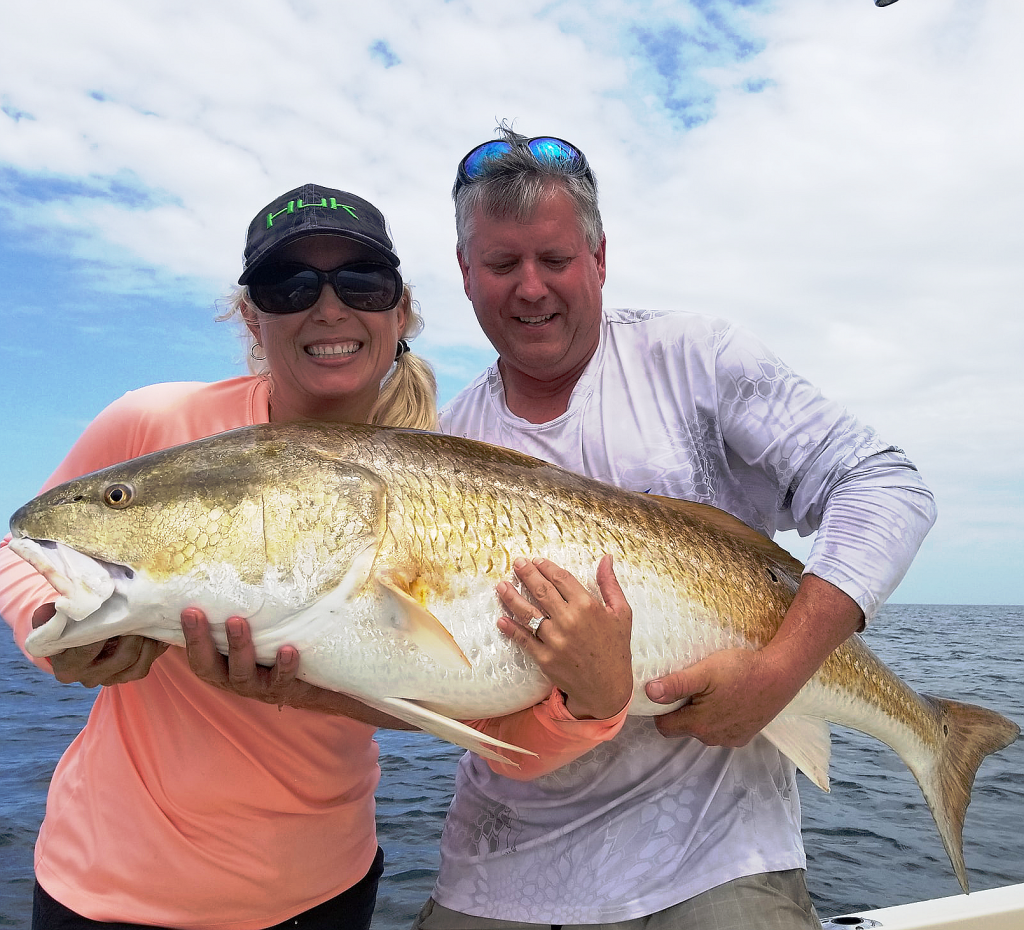
As the Chesapeake summer slowly slips into fall, many anglers are looking forward to the upcoming rockfish run. But don’t wave goodbye to summer fishing patterns just yet. Unless you’ve been hiding under a bridge, you’ve probably heard about the incredible bull red drum catches south of Poplar Island. We seem to get more redfish every year in Maryland, and this has been the best season in recent memory.
At one time redfish, or channel bass as they are sometimes called, were so prolific that anglers caught them by the boatloads. Fishing pressure increased every year until the early-1980s when stock assessments showed big problems. Regulators stepped in and eventually declared a complete moratorium on the harvest of redfish greater than 27 inches on the East Coast. It is taking the species a long time to recover. Red drum have an estimated 30 year lifespan and some can live up to 60 years. Removing any spawning-age fish from the overall population has implications. Bigger and older fish can drop as many as forty-million eggs per season. That’s ten times as many eggs as younger ones. Killing a single bull red can impact the health of the species.
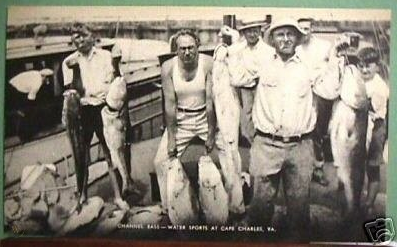
Mature redfish are here in the Chesapeake to spawn. Both adult males and females are called bulls. They reproduce when conditions are right, usually August through mid-October. They prefer high-salinity nearshore waters including estuaries like the Chesapeake Bay where water temperatures are between 70 and 80 degrees Fahrenheit. The optimum temperature for eggs to survive is about 75 degrees. A sudden drop in water temperature can trigger a spawn. Spawning usually occurs at night.
Male fish arrive on the spawning grounds first. They sometimes school together in groups and make low-frequency knocking or drumming sounds to attract females. Each male has a slightly different call. The sound can be very eerie when heard from a quiet boat at night. You can hear it for yourself on this website.
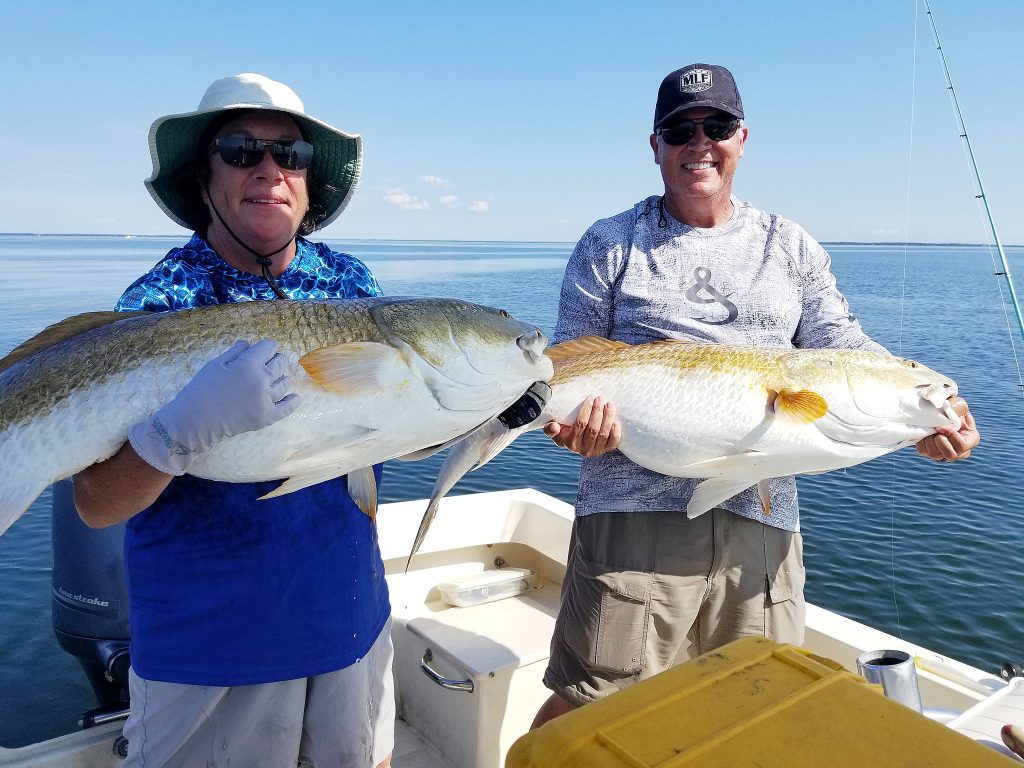
Females come into the drum circle just before they are ready to drop eggs, and usually on an incoming tide. One female can drop eggs every three to five days and several times over the course of the spawning period. Once they are fertilized by the males, the eggs are carried on the tides back into the rivers and marshes.
Bull redfish will continue to forage for food throughout their spawning period. They feed primarily near the bottom, but they will sometimes attack schools of menhaden on the surface. They are naturally curious and will respond to sounds they associate with predation such as explosive splashing. That’s why popping corks and extra-large surface plugs are good lures for them. Most anglers here on the Bay are using soft plastics with slightly heavier than normal jig heads fished close to the bottom, but don’t rule out topwater.
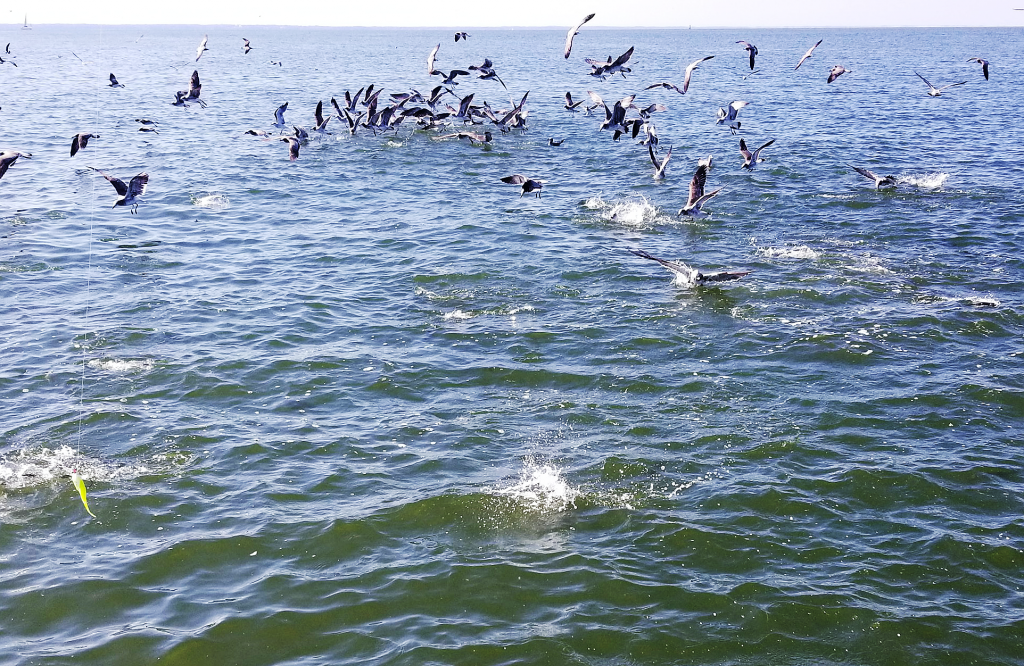
There is nothing more exciting than happening upon a school of giant blitzing redfish, but don’t count on finding them feeding on the surface very often. A good strategy is to look for schools of rockfish and bluefish that are eating peanut bunker (menhaden) and jig under them. It’s not too hard to find fish under working birds this time of year. The trick is to tell the difference between the bunker-feeding fish, and those that are attacking glass minnows. Clues include bigger birds, an absence of diving terns, and the behavior of the gulls. You can read more about that in the birds chapter of my book, Chesapeake Light Tackle book, An Introduction to Light Tackle Fishing in the Chesapeake.
Captain Jamie Clough of Eastern Shore Light Tackle Charters has been especially successful in putting his clients on giant redfish this year. He advises wide-bodied soft plastics with lots of color contrast. “Persistence is key,” he says. “Just keep looking until you find schools of slightly bigger rock and blues, then pound away. There’s no reason to waste your time jigging around little fish.”
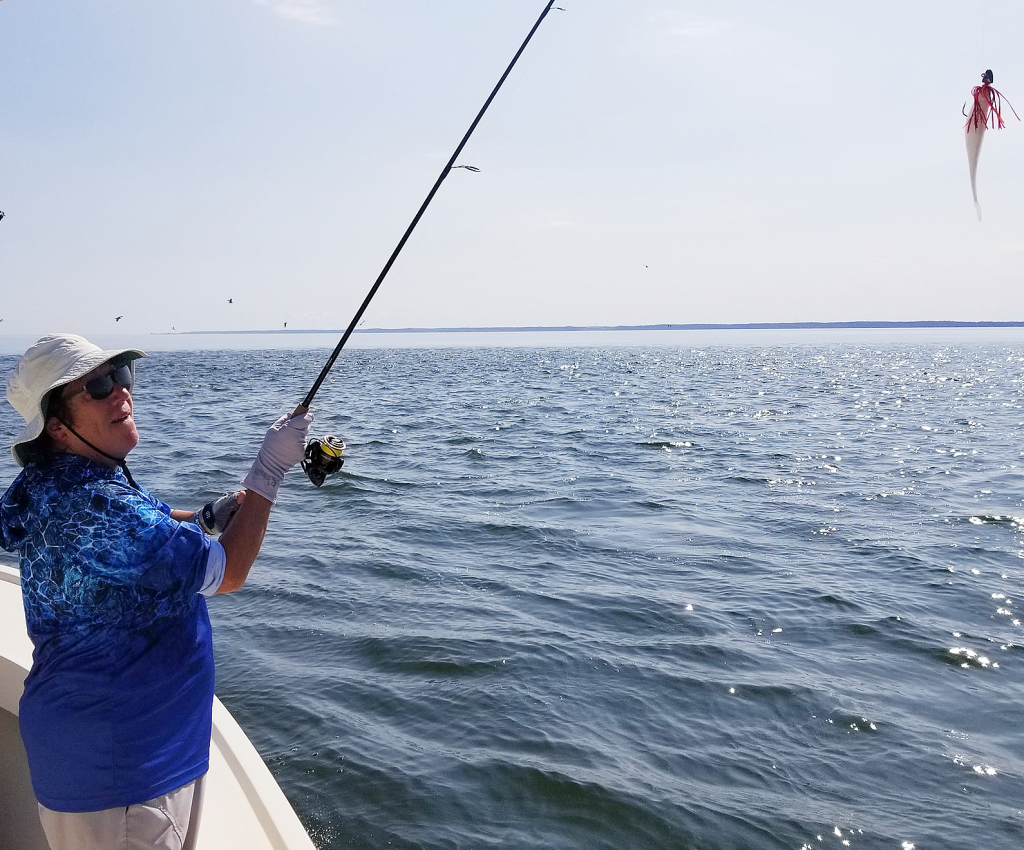
The same tackle that we use to cast for rockfish will work for bull reds, but it’s a good idea to upsize a little so you can land these big fish quickly. I suggest at least a medium-heavy rod with 20-pound test braid and a 30-pound test fluorocarbon leader. Next generation soft-plastics work well because they are less likely to be bitten off by bluefish. Some bull reds are also being caught on metal lures, but be careful because most don’t have hooks heavy enough to handle fish this size.
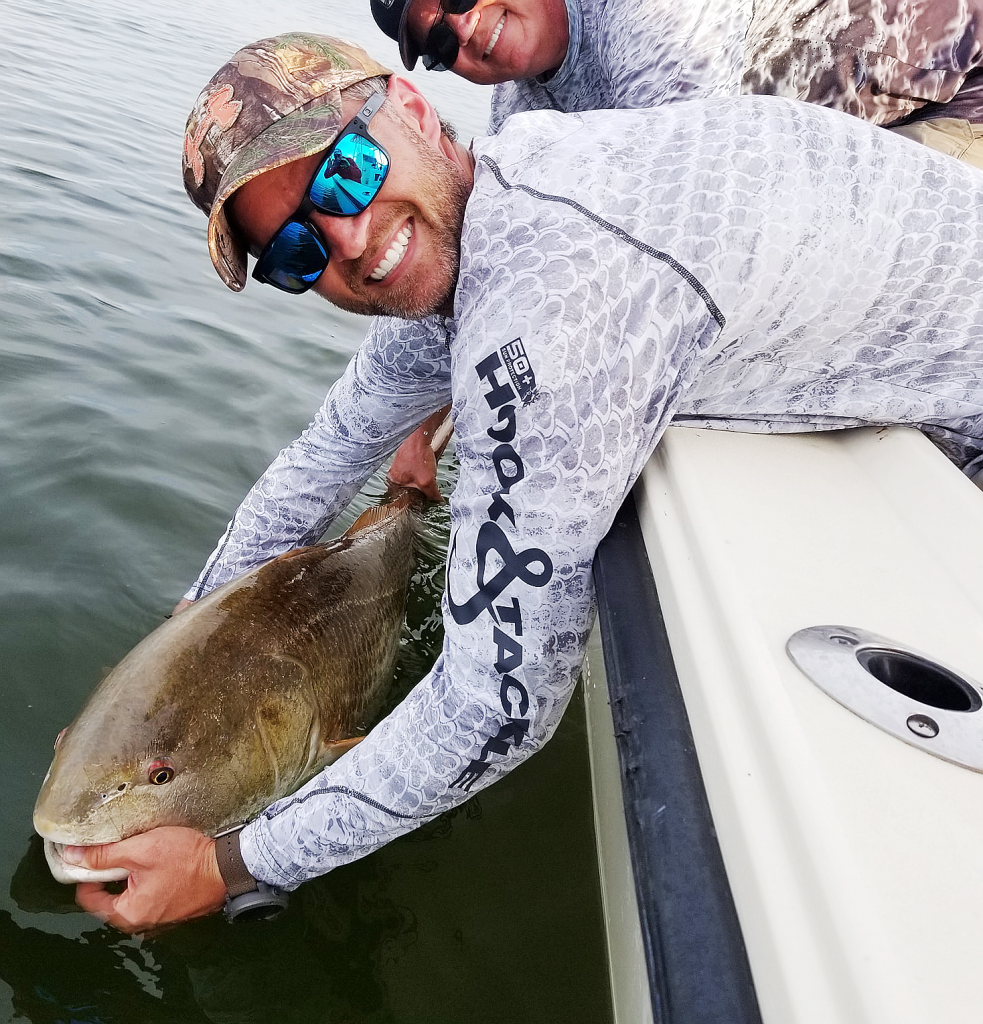
With redfish populations on the increase, the Chesapeake Bay is ground zero for the launch of an incredible fishery. I don’t believe this year is an anomaly and I think next year will be even better assuming we have similar temperature and salinity conditions. Hopefully, fisheries managers won’t relax the current regulations so these big fish populations can continue to recover.
Bull redfish don’t taste good so there’s no reason to kill them. The current slot in Maryland is 18-27 inches and you can only keep one fish in that size range. In Virginia, the slot is 18-26 inches and you can keep three. Careful catch and release practices are essential. Keep the fish in the water except for a quick picture and fully revive them before turning them loose.
Since the long-range weather forecast predicts continuing warm weather in the region, we could have big redfish in the Bay for several more weeks. Now’s your chance to catch a fish of a lifetime right here close to home!
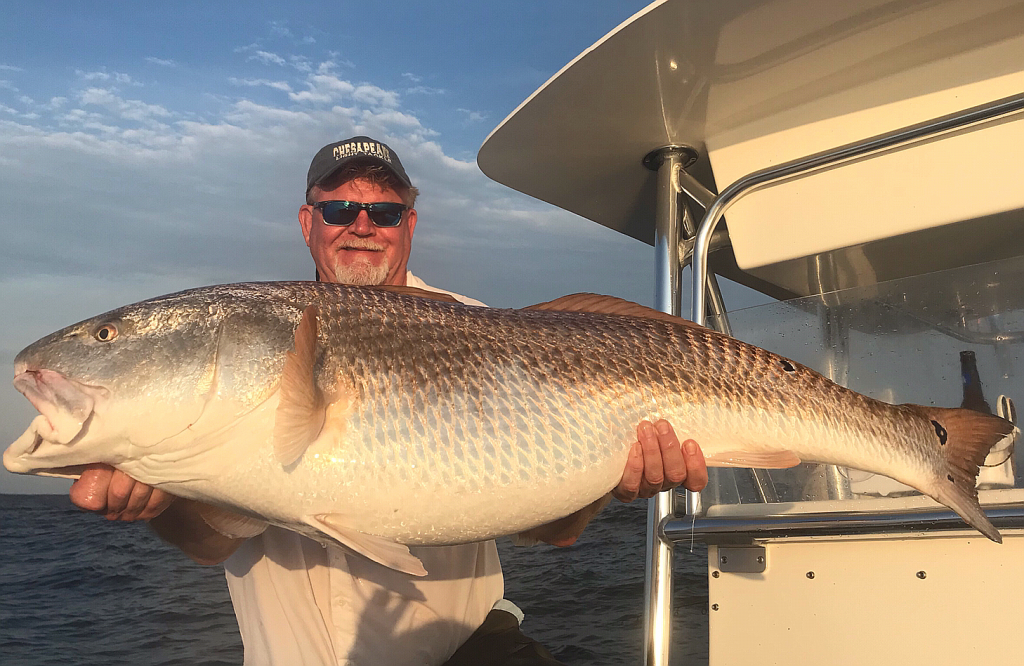




Great information and what a beautiful fish…WOW
Great write up. I hope these come back next year!